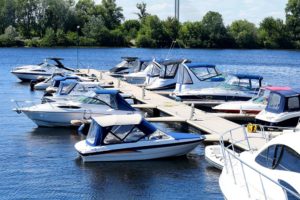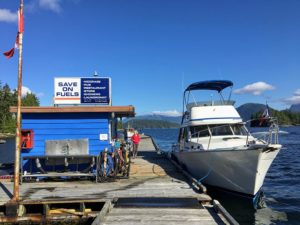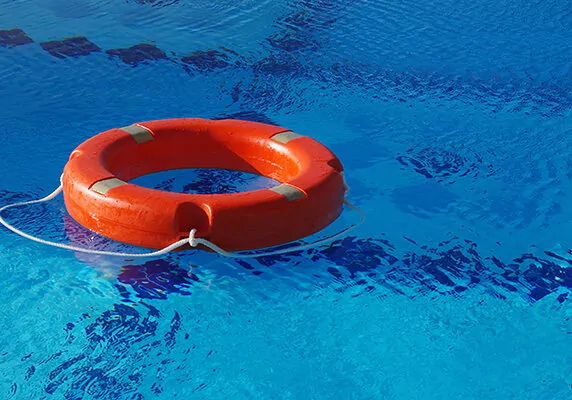Five Kansas City residents were injured over Father’s Day weekend in a boat explosion at the Lake of the Ozarks in Missouri. The victims were aboard a 25-foot Chris Craft, which had just finished taking on fuel at a dock. Images online show that the boat was nearly bisected horizontally from the blast.
With Summer on the way, law enforcement agencies in California have started to send out water safety tips in hopes of preventing accidental drownings and other water-related injuries. This season has already proven deadly, with two men drowning at the Lake Del Valle in Alameda County, both victims found without life vests.
When most people think of boat safety, they think of the importance of life vests and staying alert to the water around them. However, the Missouri boat explosion is a reminder that our watercrafts themselves can be just as dangerous.
What could have caused the boat explosion in the first place?

A lack of proper ventilation and mechanical failure were cited as the causes for the incident, according to a report by the Missouri State Highway Patrol report. Family members stated that the explosion occurred shortly after refueling, after multiple failed attempts to start the motor.
While there will be further investigations to uncover the exact point of failure, such explosions are something boat owners and operators are regularly urged to be wary of. Shortly after the blast, the MSHP Twitter account posted a reminder to use exhaust blowers prior to starting a boat engine.
For boats with inboard gasoline engines, fuel vapor build-up is one of the most common causes of fire or explosion. A blower system can ensure that these vapors are cleared before engine start causes an errant spark that ignites the fumes. Most boating safety experts recommend that blowers are used for 4 minutes prior to the start of any motor.
Maintenance plays a major role in preventing an explosion. While the hulls of many personal boats can last for years without an overhaul, the fuel lines that were once flexible and properly sealed can grow brittle, developing cracks and leaks. The leaked fuel and fumes can build up in the engine compartment, mixing with freshwater or seawater in a boat’s bilge, creating a situation that could be disastrous once a figurative match is lit.
Multiple such incidents have occurred at the Lake of the Ozarks.
According to a 2017 report by the U.S. Coast Guard, 157 boating accidents involved fires and explosions caused by fuel vapors or leaks. At least two of these incidents were reported at the Lake of the Ozarks in 2017. Another series of fuel fires and explosions rocked the lake in 2018, resulting in one death and multiple injuries.
While many of these accidents have occurred at this lake, common factors may be the watercraft and the operators themselves. Personal Watercraft (PWCs) are not required to have blower systems installed, instead relying on “passive” ventilation systems that allow air to flow through the engine while the boat is in motion. However, when the boats float without power, that air stays relatively still, potentially allowing for fumes to build up.
This means that even if the boat was safely launched from a dock, hours of floating on a lake could allow fumes to build. In many of these incidents, the explosions occur after operators specifically failed to use their blower systems, or allow their boat to safely ventilate before engine restart.
A 2018 boat explosion in the Bahamas highlights heightened risks with foreign operators.
A boat explosion is often described as mechanical failure. In reality, they are most often the result of negligence on the part of boat maintainers and operators. While there are many laws in the US to regulate PWCs and tour boats, countries outside of the US have their own rules and regulations. Enforcement of these laws can be more lax, with tragic consequences.
In July 2018, a tour boat in the Bahamas exploded with twelve people aboard. One tourist was killed, and nine others suffered serious injuries, with one victim needing to have both legs amputated. The tour boat was operated by Four C’s Adventures, a smaller company that advertised itself as a lower cost alternative to more expensive firms with larger tour boats.
The Bahamas Port Department issued an immediate suspension of service to the company after the accident, but they allegedly continued operations, prompting further scrutiny. Investigation revealed that the home-built boat in question was not properly registered with the Port Authority, nor had it been inspected. Furthermore, the boat may have been inadequately crewed, with the first mate aboard the vessel allegedly having been the company owner’s 12-year old son.
Investigations into the Bahamas explosion revealed that of 18 tour companies operating in the Exumas region where the explosion took place, only six were registered officially with the Port Department. This means that most of the tour boats operating in the region were possibly never subjected to safety inspection.
Preventing a boat explosion involves following routine safety procedures and maintenance.

A boat explosion of this nature may occur after a boat has been allowed to sit still in the water for a period of time. A spark caused by a motor start, faulty wiring, can be enough to ignite fuel fumes, starting a fast burning fire, or a catastrophic explosion. Other incidents have occurred immediately after, or during the process of refueling. Still other blasts have occurred during maintenance, surprising victims who believed they had followed every precaution up to the moment of the explosion.
With weather becoming more perfect for taking a motor boat out to a lake, many Californian boat owners are starting to prep their PWC’s for a day out on the water. Boating down the Sacramento River, or across Folsom Lake can be a lot of fun, but doing it safely means more than just wearing a life jacket or safety belt!
Regular maintenance can save lives.
Many boat owners do take regular care of their boats. Unfortunately, some allow their boats to fall into disrepair, putting more effort into the appearance of the boat rather than the engine beneath the hull. Your regular maintenance should always include the engine, including the various fuel lines, feed lines, and vent lines. Every part of the fuel system should always be inspected for fuel leaks.
Never cut corners with repairs.
If you do find something wrong with your boat, whether it’s a breach in the hull, a series of cracked fuel lines, or a broken bilge pump, use the right parts for the job. Tape around a brittle feed line might count as a temporary measure in the eyes of some, but if the worse comes to pass, your shortcut may prove to be far more costly than to have just purchased the right replacement parts to begin with.
For example, a replacement fuel hose should ideally be a USCG-approved and certified A1-15 hose, rather than something that was originally intended for use in a car. Even if the dimensions match, the A1-15 hose is designed specifically to withstand conditions that are unique to a boat out on the water.
Always use blowers, or ventilate your engine compartment.
Most law enforcement and boating safety experts say that if your boat is equipped with blowers, you should always run them for at least four minutes before you start your engine. If your boat is equipped with outboard engines, or does NOT have a blower system, you need to ventilate the engine compartment, and check for fumes.
You should follow this rule even after a long day out at the lake. Just because you started up just fine at the dock does not mean that fuel hasn’t been leaking into your engine compartment, nor does it mean fumes couldn’t have started to build back up throughout the day.
Limit the number of distractions and hazards while refueling.
If you’re taking on fuel, focus on doing the job right. This means limiting the number of people on the boat to you, and anyone else qualified to help you with the task. Never allow open flames on the boat during this process, and limit the use of electronic devices.
Most importantly, never try to start a boat while refueling. A boat fire on Folsom Lake in 2017 was caused when the boat’s ignition was turned while taking on fuel. The ensuing fire was prevented from becoming a larger explosion thanks to the efforts of an individual with a fire extinguisher on hand. Three minors were injured in the accident.
Diesel engine boats can be just as dangerous as gasoline-powered boats.
Gasoline and diesel fuel have different properties. But while diesel fuel doesn’t have the same capacity to cause explosions, it can still present a serious fire hazard. The properties of diesel fuel often means that the engine compartments of diesel-powered PWCs are not ignition-protected. But under the right conditions, for example diesel fuel spraying from a broken feed line onto super-hot engine parts, can cause a serious fire in very short order.
Know where your fuel cut offs are, and make sure they are in working order.
In the event of an emergency while on the water, your fuel cut-offs can prevent an explosion, or put a stop to a fuel leak. Unfortunately, many boat operators do not know where their cut offs are, or they have failed to properly maintain them over the years. These parts, like any other on a boat, are still subject to wear and tear.
Mark your fuel cut-offs, for both yourself as well as anyone else aboard the boat. If they can be operated from the controls of your boat, make sure that it’s obvious both to you and anyone else who may need to use them in an emergency.



